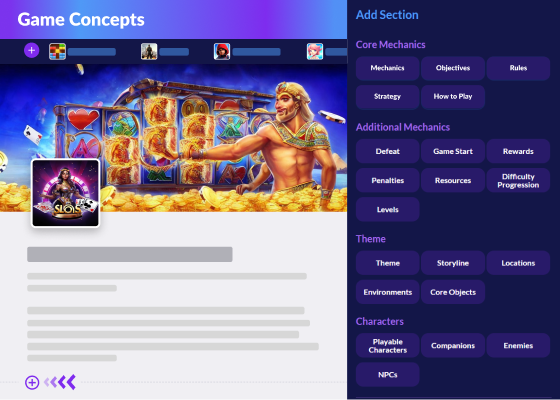In the realm of game development, the fusion of captivating visuals and engaging mechanics serves as the cornerstone of a memorable gaming experience. Whether you're a seasoned developer or an aspiring creator, mastering the art of game design requires a deep understanding of both aesthetics and functionality. In this guest post, we'll delve into the intricacies of crafting game art, exploring innovative mechanics, and the symbiotic relationship between the two.
How to Make Game Art:
Game art transcends mere visuals; it embodies the essence of a game's narrative, setting, and characters. Here are some essential steps to create compelling game art:
Conceptualization: Start by conceptualizing your game's visual identity. Define the art style, mood, and theme that align with your game's narrative. Sketching out ideas and creating mood boards can help crystallize your vision.
Prototyping: Experiment with different art styles and techniques through prototyping. Use tools like Photoshop, Illustrator, or even pen and paper to flesh out your ideas. Don't be afraid to iterate and refine your designs based on feedback.
Consistency is Key: Maintain consistency in your art style across all elements of the game, including characters, environments, and UI elements. Consistency enhances immersion and reinforces the game's aesthetic identity.
Embrace Iteration: Game art is a continuous process of refinement. Solicit feedback from peers and playtesters, and be willing to iterate based on their input. Embracing iteration is crucial for achieving polished and cohesive visuals.
Game Mechanics:
Game mechanics serve as the building blocks of gameplay, dictating the rules, interactions, and challenges that players encounter. Here's how to craft innovative game mechanics that captivate players:
Identify Core Mechanics: Start by identifying the core mechanics that define your game's unique gameplay experience. Whether it's platforming, puzzle-solving, or resource management, establish a solid foundation upon which to build your game.
Experimentation: Encourage experimentation and exploration within your game mechanics. Provide players with opportunities to discover emergent gameplay possibilities and unexpected interactions. Games like "Minecraft" and "Portal" excel in fostering creativity through open-ended mechanics.
Balancing Act: Strive for a delicate balance between challenge and accessibility. Tailor your game mechanics to provide a satisfying learning curve, gradually introducing new concepts and complexities as players progress. Balancing ensures that players remain engaged without feeling overwhelmed or frustrated.
Player Agency: Empower players with meaningful choices and consequences within your game mechanics. Whether it's branching narrative paths, moral dilemmas, or strategic decision-making, give players agency to shape their own experiences. Player agency fosters a sense of ownership and investment in the game world.
Innovative Game Mechanics:
Innovation lies at the heart of game design, pushing the boundaries of what's possible and reshaping player expectations. Here are some strategies for incorporating innovative game mechanics into your projects:
Inspiration from Diverse Sources: Draw inspiration from a diverse range of sources, including other games, literature, science, and everyday life. Look beyond conventional genres and mechanics to uncover fresh ideas and perspectives.
Hybrid Mechanics: Experiment with hybrid mechanics that combine elements from different genres or gameplay styles. For example, "Undertale" blends traditional RPG mechanics with innovative narrative-driven choices, creating a truly unique experience.
Emergent Gameplay: Design systems that foster emergent gameplay, allowing for unpredictable interactions and outcomes. Games like "The Sims" and "Breath of the Wild" excel in providing players with a sandbox environment ripe for experimentation and discovery.
Iterative Design Process: Embrace an iterative design process that encourages experimentation and iteration. Prototype early and often, soliciting feedback from players and iterating based on their experiences. By remaining flexible and open-minded, you'll uncover opportunities for innovation that can elevate your game to new heights.
Conclusion:
Mastering the art of game design requires a delicate balance of creativity, technical skill, and innovation. By understanding the fundamentals of game art and mechanics, and embracing a spirit of experimentation and innovation, you can create unforgettable gaming experiences that resonate with players long after the credits roll. So, roll up your sleeves, unleash your creativity, and embark on the journey of crafting your next gaming masterpiece.





Comments